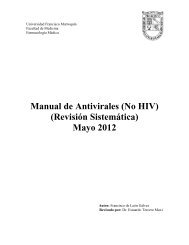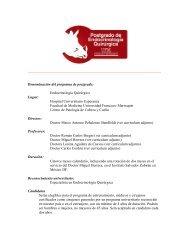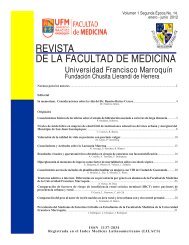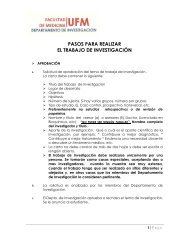Teaching That Sticks (pdf)
Teaching That Sticks (pdf)
Teaching That Sticks (pdf)
- No tags were found...
Create successful ePaper yourself
Turn your PDF publications into a flip-book with our unique Google optimized e-Paper software.
TEACHING THAT STICKS<br />
So a friend of a friend of ours, who’s a frequent business traveler, was returning recently from a<br />
meeting with clients, and he stopped into the airport bar. What happened next surprised him: An<br />
attractive woman approached him and offered to buy him a drink. He said sure. She returned with<br />
two drinks, he took a sip of his, and … that’s the last thing he remembered.<br />
Until he woke up in a bathtub full of ice. With his kidneys missing.<br />
Rough day.<br />
You’ve probably heard this urban legend about “kidney thieves.” It’s an absurd idea. You’ll probably<br />
meet someone, at some point in your life, who swears it happened to their friend’s cousin, but<br />
it didn’t. It’s 100% urban legend. Yet everyone seems to know it—even in other languages and other<br />
cultures. It’s an idea that has stuck.<br />
A sticky idea is an idea that’s understood, that’s<br />
remembered, and that changes something (opinions,<br />
behaviors, values). As a teacher, you’re on the front lines<br />
of stickiness. Every single day, you’ve got to wake up in the<br />
morning and go make ideas stick. And let’s face it, this is<br />
no easy mission. Few students burst into the classroom,<br />
giddy with anticipation, ready for the latest lesson on<br />
punctuation, polynomials, or pilgrims.<br />
So, given the difficulty of your mission, and the<br />
importance of it, it’s annoying that dumb ideas (like the<br />
kidney thieves legend) seem to stick so effortlessly. What’s<br />
even more irritating is that urban legends don’t have any<br />
resources behind them. There’s no textbook budget, lesson<br />
plan, or training program for an urban legend. Nor<br />
are there any people behind them! They stick on their own<br />
merits. There’s just something about the way these ideas<br />
are constructed that makes them “naturally sticky.”<br />
And it’s not just sleazy ideas that stick naturally, it’s a<br />
whole world of other ideas: proverbs (“A bird in hand…”)<br />
and fables (“The Tortoise and the Hare”) and conspiracy<br />
theories (black helicopters) and religious stories (the<br />
Good Samaritan) and fad diets (Atkins) and scientific<br />
ideas (relativity). Some of these ideas are profound, some<br />
are ridiculous, but they all stick. Why? What links them?<br />
The two of us—Chip and Dan Heath, we’re brothers<br />
and now co-authors—have been studying successful ideas<br />
like these for years, trying to reverse engineer them. What<br />
we’ve found in our research is that these ideas share common<br />
traits. You can actually spot the same trait in a successful<br />
conspiracy theory that you can spot in a successful<br />
history lesson. The content is vastly different, but the “idea<br />
design” is similar.<br />
There are very practical ways that you can make<br />
your teaching stickier.<br />
We’ve discovered 6 traits that make ideas stickier. A sticky<br />
idea is:<br />
1.<br />
2.<br />
3.<br />
4.<br />
5.<br />
6.<br />
Simple<br />
Unexpected<br />
Concrete<br />
Credible<br />
Emotional<br />
Story<br />
We wrote a book about these 6 traits called Made to<br />
Stick: Why Some Ideas Survive and Others Die. In this article,<br />
we’ll give you an overview of the 6 traits and how they apply<br />
to teaching. (If you like this guide, it’s pretty clear you’ll<br />
like the book, which goes into much more depth on these<br />
topics.)<br />
Here’s the good news about stickiness: This isn’t just<br />
interesting trivia about how the world of ideas works.<br />
Rather, it’s a playbook. There are very practical ways that<br />
you can make your teaching stickier. For instance, every<br />
Earth Science class has a lesson on the Earth’s magnetic<br />
field. But one teacher decided to add a bit of mystery. She<br />
asked the students: “Did you know that if you’d been holding<br />
a compass 25,000 years ago, and you were walking<br />
‘North’ according to the compass, you’d be headed straight<br />
for the South Pole?” <strong>That</strong>’s an example of a “curiosity gap,”<br />
a technique we’ll discuss in the Unexpected section.<br />
We hope to inspire you in this article by telling stories<br />
of teachers who made their lessons stick, and we’ll show<br />
you how to apply the same principles to your own lessons.<br />
Regardless of your level of “natural creativity,” we’ll show<br />
you how a little focused effort can make almost<br />
any idea stickier. And a sticky idea is one that’s<br />
more likely to make a difference.<br />
<strong>Teaching</strong> that <strong>Sticks</strong> 1








